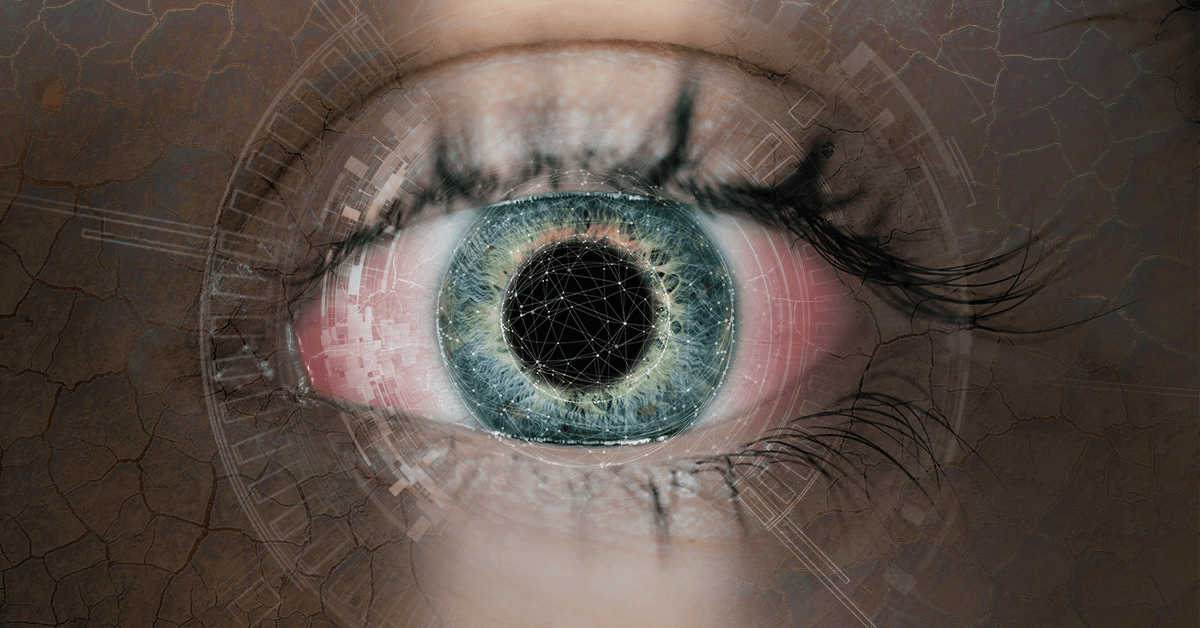Underserved Dry Eye Populations Offer Opportunity for Developing Technologies

The population of US dry eye patients is greatly underserved, but innovative treatments in development are poised to provide more treatment options and capture at least some of those underserved patients.
That was the consensus of the “Dry Eye Outlook” panel at last week’s virtual OIS Dry Eye Innovation Showcase.
“A fascinating statistic for me,” said panel moderator Paul Karpecki, OD, “is that only about 5% of all patients that have dry eye disease [DED] in the US are currently being treated therapeutically.” Dr. Karpecki is an associate professor at the University of Pikeville Kentucky College of Optometry and director of corneal services at Kentucky Eye Institute, Lexington.
“This is the tail wagging the dog,” said Joseph Tauber, MD, CEO of Tauber Eye Center in Kansas City, MO, who pointed out that he has a reputation for contrarian views. “The problem is we’re not very good at treating this disease. And because we’re not good at treating it, there is no motivation to put patients on treatments that will be middling quality, and fight through portals to get them there. The bottom line for me is, they just don’t work that well, and I think that’s what’s holding most people up.”
A number of emerging technologies are aiming to improve upon those options and cover more of this underserved population.
Emerging Therapeutic Options
Specifically mentioning the iTear 100 neurostimulation device by Olympic Ophthalmics, and Oyster Point’s pipeline product OC-01 (varenicline), Dr. Karpecki asked where new and different approaches to treating DED can fit in.
William Trattler, MD, president of the Center for Excellence in Eye Care, Miami, said he had a chance to use the iTear 100. “It felt great; it’s something I would do every morning for a while,” he said. “It’s very easy and I let some others try it, and most were able to get some benefit from it.”
Dr. Tauber mentioned Novaliq has a novel product, NOV03, for meibomian gland dysfunction (MGD). He explained that when the glands can no longer produce functioning lipids, patients need a lipid substitute. NOV03 might be “a fantastic addition” to over-the-counter products now used for this.
He also mentioned other agents with novel mechanisms of action under investigation, including lacritin, recombinant human lubricin, and Janus kinase inhibitors, as well as treatments that focus on the Demodex mites that block the meibomian glands.
Adjuncts or Replacements?
Dr. Karpecki then asked if emerging drops or therapeutics that can solubilize lipids, such as NOV03, will be symbiotic with existing thermal expression and pulsation technologies, or will they replace them?
“I think there’s always going to be a polytherapy concept to the treatment of dry eye,” said Whitney Houser, OD, founder of Signal Ophthalmic Consulting, Memphis, TN. “When we saw thermal treatments come out, and then we had intense pulsed light, people had to figure out where those things worked together. We found that they do pair nicely together. I think the same thing as we bring a lot of these new products around – we’ll find new ways to have them be symbiotic.”
There will be patients who will need an in-office procedure periodically and others who will need one of the new treatments, noted Marguerite McDonald, MD, of Ophthalmic Consultants of Long Island. “The longer your dry eye center of excellence is open, the worse the cases will be that come to see you,” she said. “Those people will find you.”
Added Dr. Karpecki, “We have to continue to have options depending on what’s working and where the patient is.”
On-Label Corticosteroids
Dr. Karpecki said that although doctors have been using corticosteroids to treat DED flare-ups for years, none have been approved by the US Food and Drug Administration for such use. Now however, Kala Pharmaceuticals has an FDA Prescription Drug User Fee Act (PDUFA) date in October for EYSUVIS. The panelists considered how having something on label could affect prescribing.
It will be “a big hit,” predicted Dr. McDonald. “Dry eye experts have been giving their steroid of choice for flare-ups for years, but it makes comprehensive doctors anxious; they worry about their liability,” she said. “If this is blessed by the FDA, comprehensive doctors will use it and we will too.”
“Do you think our colleagues would be apt to treat a milder dry eye with a steroid?” Dr. Karpecki asked.
“Absolutely,” answered Dr. Trattler. “I love steroids. I think we have some nice options currently, and they’re quite effective, but most of them are off-label. So having something on-label will pull out the rest of the doctors who are not comfortable.”
Dr. Tauber said he uses steroids sparingly. “I use them for patients who are very symptomatic, but most of the dry eye I see is for under-addressed MGD, and I have pretty good success with really focusing on that,” he said. “Probably no more than 5% of my patients get on steroids, and that’s for a relatively short period of time.”
He predicted the Kala candidate could encounter commercial challenges if it’s approved. They include pricing, because other versions of the same agent are available, although off-label, and in determining which patients should get it.
But existing topical steroids work well for symptomatic MGD, Dr. Trattler noted. “You can start your MGD treatment including a topical steroid and they come back and they’re happy, so it’s a great first-line therapy,” he said.
“One thing is clear,” said Dr. Karpecki in closing the virtual session. “There is need for a lot of new drugs, a lot of new therapies, a lot of new devices, and a lot of new approaches to dry eye disease. We’re only treating 5%; 95% still needs to be tapped, through knowledge, through education, and through new drugs.”
